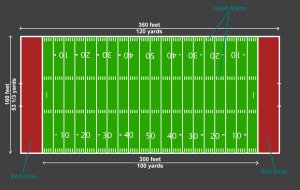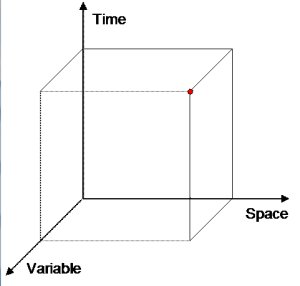

I thought I would share something I’ve learned recently that’s completely changed the way I look at the world around me. The next time you go jogging through the woods, here’s something neat to think about that’s dependent on the physics of space-time.
Say that you recently applied to colleges and were going to meet an admissions officer for an interview. The two of you would need to share the location AND the time of the meeting. This is what many people refer to when they state “the fabric of space-time” (I admit, I might be guilty of this as well). You’ve probably heard it so often that the actual meaning of “the fabric” eludes you. Well, that’s all it means – the Universe. Essentially, the medium that everything exists in (including you), can be defined as coordinates encompassing location and time. (For a more detailed explanation, take a look at this article).
Here’s where things get interesting.

Imagine that you’re standing at a football field, ready to practice your amazing quarterback skills. Being the super-human athlete that you are, you can throw a football across the entire length of the field. In fact, your throwing skills are so developed that you can launch the football at the exact same speed each time.
You then throw the football from one end to the other, directly horizontally, and you measure the time to be x seconds. You throw the ball once more (at the exact same speed), but this time you throw it across the diagonal of the field. This time, it takes the ball a little bit longer to travel the same horizontal distance. Why? Well, some of the ball’s velocity was shifted in the y-direction and there wasn’t as much in the x-direction.

This same thinking can be applied to movement of objects through space-time. According to Einstein’s Theory of Special Relativity, objects in motion experience a “slower” time. And this theory offers an explanation. If an object is stationary relative to its surroundings (ie. someone reading this article while sitting at their desk), then all of their velocity is directed in the “time”-axis. Much like the second football above, once objects start moving relative to their surroundings, some of that velocity is then directed to the “space”-axis, which slows down their velocity in the time-axis, causing them to experience time slower. This is a property dependent on space-time itself.
To put it simply, every time an object moves in the conventional way – that is, through space – it reduces the objects motion through the time-dimension. It’s similar to the football analogy given above.

If you carry this thinking out further, you notice that if ALL of an objects velocity is directed in the space-axis – that is, it’s moving at the fastest speed possible (speed of light) – then it doesn’t experience time. So all photons of light never experience time. To a photon traveling from the Andromeda galaxy, it will arrive at Earth at the exact same time that it was “born”.
It’s an incredible way of thinking about motion, and it’s completely changed my perspective of the world. So the next time you start walking, you’re not really walking – you’re just “borrowing” some velocity from the time-axis.
If you like this article, Kushal also writes for LuxPerci.com. Check them out.